
How Different Foods Interact With Drugs
You would be forgiven for not thinking much of drinking grapefruit juice before embarking on an acid trip, but it could have surprising effects. The compounds found in certain foods interact with those found in drugs, resulting in a range of different effects. Read about them here.
Whilst drugs are necessary to cause psychoactive effects, they are by no means the only factor in determining the quality of that experience, or even if it happens at all. When drugs take effect in the body, it is dependent on the interactions between many different chemicals.
Many common foods contain compounds that interact with different drugs, and can drastically change their effects – for good or ill.
Why are food–drug interactions important to know?
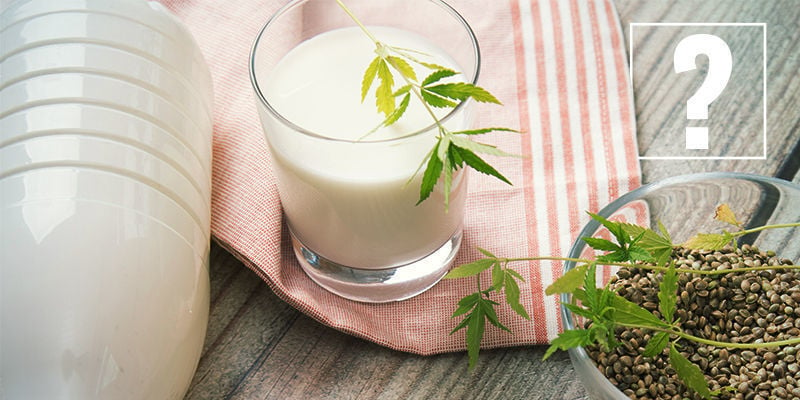
Food–drug interactions are usually nothing to worry about, because the concentration of any compounds in food which can interact with drugs are most of the time so low that they do not have any significant effects. This is not always the case, though.
There are certain over-the-counter drugs which come with a list of foods which must be excluded from a diet when someone is taking them. Some common food–drug interactions are:
-
Vegetables high in vitamin K (green leafy ones) reduce aspirins ability to thin the blood
-
Dairy products reduce absorption of antibiotics
-
Alcohol interacts with insulin
There are many other interactions between food and drugs which relate to less commonly taken medications, and some can be quite severe. But what about recreational drugs? Can foods interact with the drugs we take for fun?
Do Drugs Interact With Each Other?
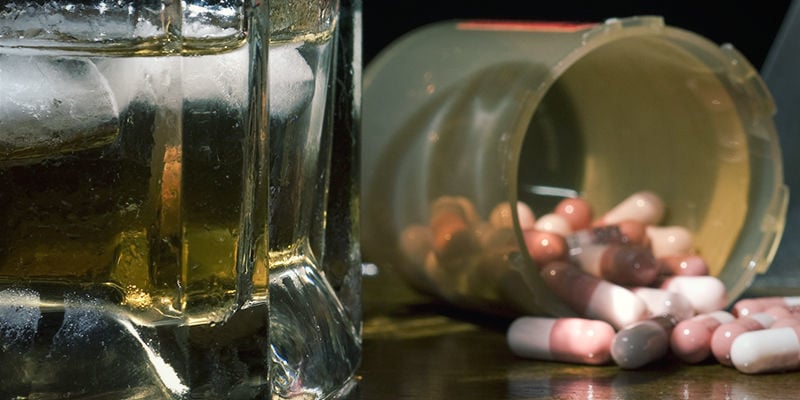
Drug–drug interactions are more common and can be incredibly dangerous, and sometimes fatal. Often, the compounds in drugs which react with one another will be the same compounds as those found in foods, or at least will be derived from them.
One very common drug–drug interaction between two recreational drugs is that which occurs between alcohol and cocaine. When cocaine and ethanol (alcohol) mix in the liver, they form cocaethylene. Cocaethylene has more potent and euphoric effects than either alcohol or cocaine taken alone. On the flip side, it is thought to be more cardiotoxic and carries an 18–25 fold increase of immediate death.
What foods interact with cannabis?
But back to food, and many people’s favourite vegetable: cannabis. Food–cannabis interactions do occur, although they tend to be fairly moderate. Some of them might be considered desirable, others less so. Below we’ll go into the mechanisms of three of the most common interactions.
Myrcene Containing Foods
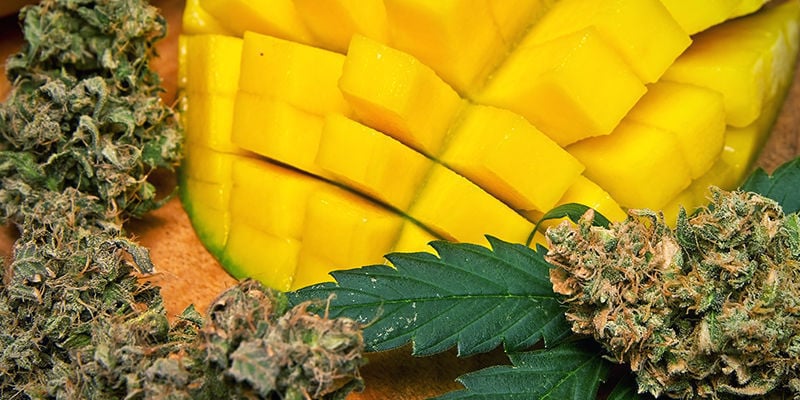
Myrcene is a monoterpene found in many things (including cannabis), but also fruits like mango, and herbs like thyme. You might have heard of people enhancing cannabis with mango. Well, this is why.
Myrcene is thought to increase THC’s ability to cross the blood–brain barrier, reducing the time by as much as 5 seconds (Russo, 2011). But where does food come into this? Some speculate, though it is only speculation, that eating myrcene rich foods can impact the effects of taking cannabis. Anecdotal reports claim that highs come on faster, are stronger, and that they last longer.
Though the above has not been proven, it has been shown that varying myrcene levels in cannabis result in very different highs. If you’ve wondered why some strains of cannabis create energetic (sativa) effects, and others a strong sedative (indica) effect, it seems myrcene has a role to play in this. Strains with over 0.5% myrcene tend to be more sedative, whereas those with below 0.5% myrcene tend to be more uplifting (Surendran et al., 2021).
Chocolate

Most people agree that eating chocolate when you’re high is a pleasant experience. Sometimes though, depending on the chocolate, this combination goes deeper than just enjoying the sugar while having the munchies.
Dark, unprocessed chocolate contains theobromine, which is thought to increase levels of anandamide in the body. Anandamide is a naturally occurring endocannaboid, produced by the body. Anadamide binds to the CB1 and CB2 receptors, and it is thought that THC binds to these receptors by mimicking the shape of anandamide. However, THC causes a psychoactive high, whereas anandamide just causes pleasant feelings.
In fact, despite their similarities, it is thought that increased anandamide levels may counteract some of the more negative effects of THC. This is why CBD (Hudson et al., 2019) is thought to be beneficial alongside THC (CBD increases anandamide levels too).
Therefore, consuming dark chocolate alongside THC-rich cannabis is thought to make the high more relaxing, and induce a more pleasant, relaxed feeling.
Alcohol

Alcohol is of course a drug, and so the alcohol–cannabis interaction is a drug–drug interaction. However, as it’s probably one of the most common in the world, is definitely worth a mention. Those who have drunk alcohol and smoked cannabis together will know that they can exacerbate one another’s effects – and this is by no means always pleasant!
Ethanol increases the absorption of THC by a large degree. A study (Lukas & Orozco, 2001) showed that blood plasma taken from people who have taken cannabis after drinking alcohol contains significantly more THC compared to those who did not consume alcohol.
Whilst many people do enjoy this combination, it is always worth exercising caution when combining drugs, especially when the aim to enhance the effects of each. What can be pleasant in isolation can quickly become unpleasant or even dangerous when working in conjunction with something else.
What foods interact with hallucinogens?
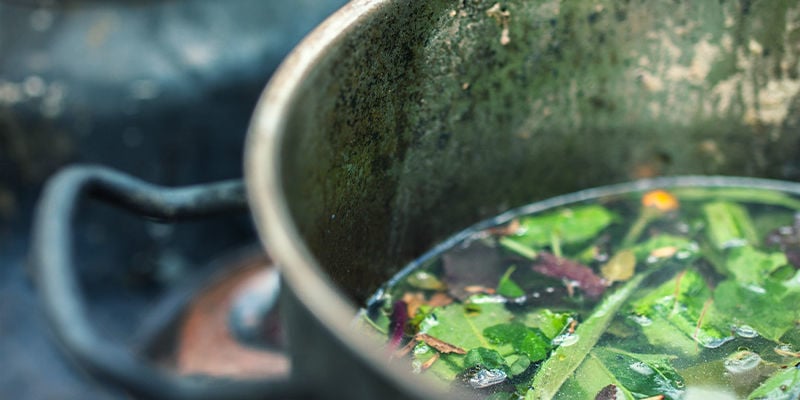
The above interactions between foods and cannabis were fairly minor, and tend not to make profound differences to the experience. However, this is not the case with hallucinogens. In fact, food–drug interactions with hallucinogens can be incredibly powerful, and should not be attempted unless you really know what you are doing.
Banisteriopsis caapi
Banisteriopsis caapi is part of a famous concoction revered by certain cultures in Central and South America. However, this vine does not act alone, but is rather part of a mix, which, together, creates the necessary chemical reaction. But what's going on?
This vine contains a monoamine oxidase inhibitor (MAOI), which allows Psychotria viridis, the other main ingredient in the brew, to produce its sought-after effects. Taken alone, Psychotria viridis gets broken down immediately in the body by monoamine oxidase enzymes, and thus does not cause any effect. So the MAOI in Banisteriopsis caapi essentially allows the compound in Psychotria viridis to act on the brain and body.
Note: MAOIs do not just affect psychedelics, but can interact with a whole host of very common foods (bananas, cheese, etc.). Therefore, if you are taking MAOIs in any form, it’s essential to investigate what you can and can’t consume on them. Some of these interactions can be fatal.
Grapefruit Juice
Grapefruit juice also works as an MAOI, and can increase the concentrations of certain drugs in the blood by up to 5 times (Bailey et al., 1998). It can therefore massively intensify the effects of drugs such as LSD and magic mushrooms, both of which are affected by MAOs.
Do not leap to guzzle down grapefruit juice before you trip though. Increasing the dose of an acid or mushroom trip by a factor of 5, and increasing its longevity is probably not a good idea. Tinkering with your body’s ability to break down foreign substances is fraught with danger.
Other Citrus Fruits
The acid in other citrus fruits, such as lemons, can convert psilocybin into psilocin. The high psilocin content of fresh mushrooms is directly available to the body. In dried mushrooms, the available amount of psilocin is low, so the psilocybin in them must first be converted to psilocin before the body can absorb it.
This does happen in the body, but can be accelerated by taking an acidic drink (orange juice, lemon juice) alongside your mushrooms. If you want to take this reaction out of your body, you can even do a lemon tek, which gives you a potent psilocin solution to drink instead of eating your mushrooms. Do this for a quicker, harder hitting high.
Taking caffeine with other drugs
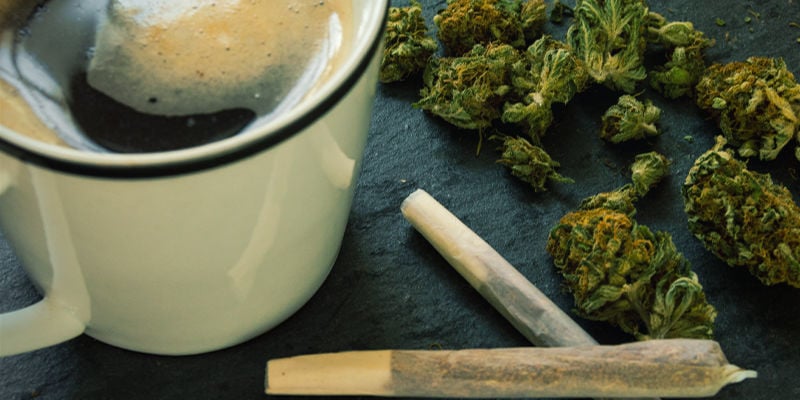
Some will suggest taking coffee, or another source of caffeine with your recreational drugs. Whilst this could be good, we’d advise against it. With psychedelics, caffeine will exacerbate any uncomfortable feelings of anxiety and make it harder to calm down. Moreover, its stimulating effect will actually reduce the trippiness of the high, without reducing the high in its entirety.
With stimulants, caffeine is even less advisable. Stimulants raise blood pressure and put pressure on the heart, and so does caffeine. Combining multiple stimulants can be very dangerous, and should be avoided.
Should you use food to increase the intensity Of a high?
Using food to increase the intensity of recreational drugs should be approached with caution. With cannabis, the effects are less severe and if you’re in a safe environment, you should be alright playing around with some interactions.
With other drugs though, it’s probably best to stay away. For instance, with psychedelics, if you want a stronger high, just increase the dosage. Doing this is safer than increasing it by causing an interaction, which is less predictable and can last for a very long time. The last thing you want is a bad trip which could go on indefinitely.
What foods reduce the intensity of a high?
You may well want to bring a high down sometimes, and there are some ways to do this using food. Whether these are strictly food–drug interactions or not differs depending on what is being spoken about. Nevertheless, there are some options.
-
Chocolate – as mentioned, the anandamide producing properties of dark chocolate can actually counteract some of the worse effects of THC.
-
Sugar rich food – sugar speeds up the metabolism and will help the body process drugs faster. It also generally makes people feel better. Mushroom highs are particularly affected by sugar.
-
Trip stoppers – Zamnesia’s own trip stoppers are designed to soothe you and reduce the intensity of a high, allowing you to come down.
- Water! Water is one of nature’s greatest cure all’s, and if you have ever find yourself too high, be sure to sip some of the good stuff.
Eating and recreational drugs: food for thought
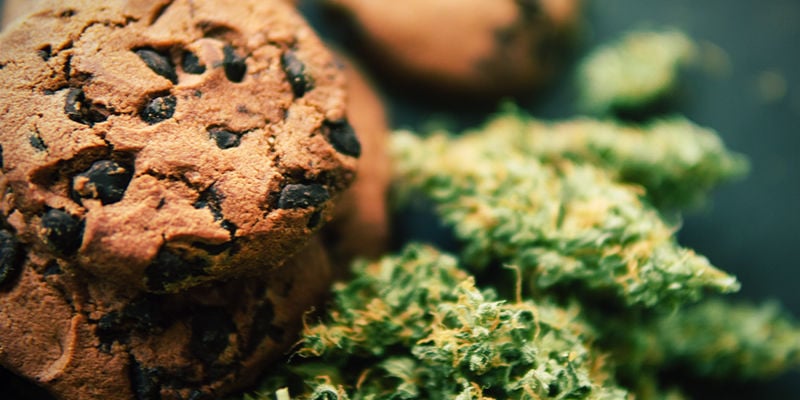
As you can see, food could potentially have a profound effect on the quality of your high. It could turn a mild trip into something much more powerful, or take the edge off of a potent smoke.
Food–drug interactions should not be treated lightly, and you should seek to educate yourself properly before trying any yourself. Just because a certain food or drink might seem like innocuous, that doesn’t mean it can’t have unexpected and sometimes unwanted effects.
- Lukas S, & Orozco S. Ethanol. (2001/10/01). Ethanol increases plasma Δ9-tetrahydrocannabinol (THC) levels and subjective effects after marihuana smoking in human volunteers. Drug Alcohol Depend. 2001;64(2):143-149. doi:10.1016/s0376-8716(01)00118-1 - https://www.sciencedirect.com
- David G Bailey, J Malcolm, O Arnold, & J David Spence. (1998, August). Bailey DG, Malcolm J, Arnold O, Spence JD. Grapefruit juice-drug interactions. Br J Clin Pharmacol. 1998;46(2):101-110. doi:10.1046/j.1365-2125.1998.00764.x - https://www.ncbi.nlm.nih.gov
- Ethan B Russo. (2011, August). Russo EB. Taming THC: potential cannabis synergy and phytocannabinoid-terpenoid entourage effects. Br J Pharmacol. 2011;163(7):1344-1364. doi:10.1111/j.1476-5381.2011.01238.x - https://www.ncbi.nlm.nih.gov
- Roger Hudson, Justine Renard, Christopher Norris, Walter J. Rushlow, & Steven R. Laviolette. (2019/10/30). Cannabidiol Counteracts the Psychotropic Side-Effects of Δ-9-Tetrahydrocannabinol in the Ventral Hippocampus through Bidirectional Control of ERK1–2 Phosphorylation. The Journal of Neuroscience. 2019;39(44):8762-8777. doi:10.1523/jneurosci.0708-19.2019 - https://www.jneurosci.org
- Shelini Surendran, Fatimah Qassadi, Geyan Surendran, Dash Lilley, & Michael Heinrich. (2021). What Are the Potential Health Benefits of This Flavouring and Aroma Agent?. Front Nutr. 2021;8:699666. Published 2021 Jul 19. doi:10.3389/fnut.2021.699666 - https://www.ncbi.nlm.nih.gov
-
 6 min
6 December 2021
10 Drinks To Enjoy When Stoned
An underrated partner during a smoking session is your beverage of choice. Whether you choose to double the buzz with an alcoholic beverage or refresh yourself with something cold and fruity, here...
6 min
6 December 2021
10 Drinks To Enjoy When Stoned
An underrated partner during a smoking session is your beverage of choice. Whether you choose to double the buzz with an alcoholic beverage or refresh yourself with something cold and fruity, here...
-
 3 min
13 February 2020
Is It Ever A Good Idea To Mix Alcohol And Weed?
Mixing alcohol and cannabis can be fun sometimes, but it's important to know what they do to your body when combined.
3 min
13 February 2020
Is It Ever A Good Idea To Mix Alcohol And Weed?
Mixing alcohol and cannabis can be fun sometimes, but it's important to know what they do to your body when combined.
-
 4 min
2 February 2020
Should You Mix Drugs? An Overview Of Polydrug Use
Find out what you must know about mixing drugs. What is drug synergy, what are the risks involved, and which combinations are relatively safe versus dangerous?
4 min
2 February 2020
Should You Mix Drugs? An Overview Of Polydrug Use
Find out what you must know about mixing drugs. What is drug synergy, what are the risks involved, and which combinations are relatively safe versus dangerous?
-
 5 min
12 June 2017
Foods That Can Make You Hallucinate
Food can cause all sorts of feelings and emotions. Despite of making us feel happy when it fills our bellies, there are foods that can excite us or make us tired, cause weird dreams, and even other...
5 min
12 June 2017
Foods That Can Make You Hallucinate
Food can cause all sorts of feelings and emotions. Despite of making us feel happy when it fills our bellies, there are foods that can excite us or make us tired, cause weird dreams, and even other...













 United States
United States










